Submitted by Sanober Khan
Bohri bazaar; an old Bazaar of Karachi
Pakistan Architecture News - Feb 06, 2019 - 00:57 25116 views
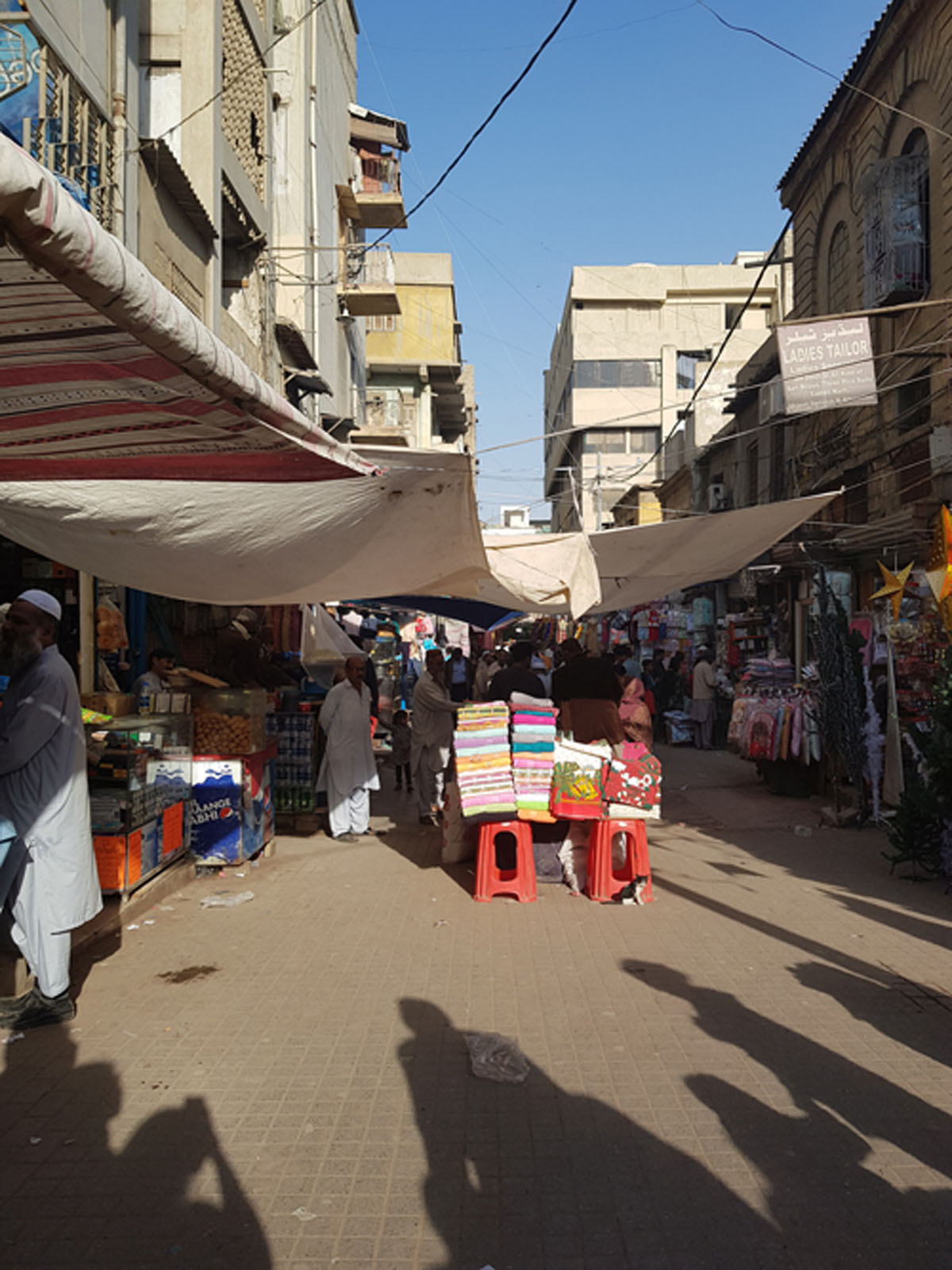
An open space for all the communities who work, live and recreate in the premises of the city centre. Bazaar (Marketplace) considered as a magnetic field for all. Bohri Bazaar is one of the old Bazaar of Karachi city. Bohri Bazaar is situated in the Heart of city, on the main spine of city’s commercial area Saddar, Karachi, Pakistan. It serves as the market of fashionable daily goods. In a brief history, the activity of Bazaar began in 1939. It was designed for serving the British military camps when Britishers had the hold on Walled city Karachi.
The nature of Bazaar is inclusive as it absorbs the neighbourhood context homogenously. The main attraction of Bazaar is their Local and Handmade goods which becomes the source of attraction for locals as well as for tourist too. Hundreds of other activities are also being part of the place as this place produces many traditional goods; at the same time its economy boost by retail activities. A large number of people visits bazaar on daily basis, one of the reason to visit the area has multiple amenities in its neighbourhood to attract people.
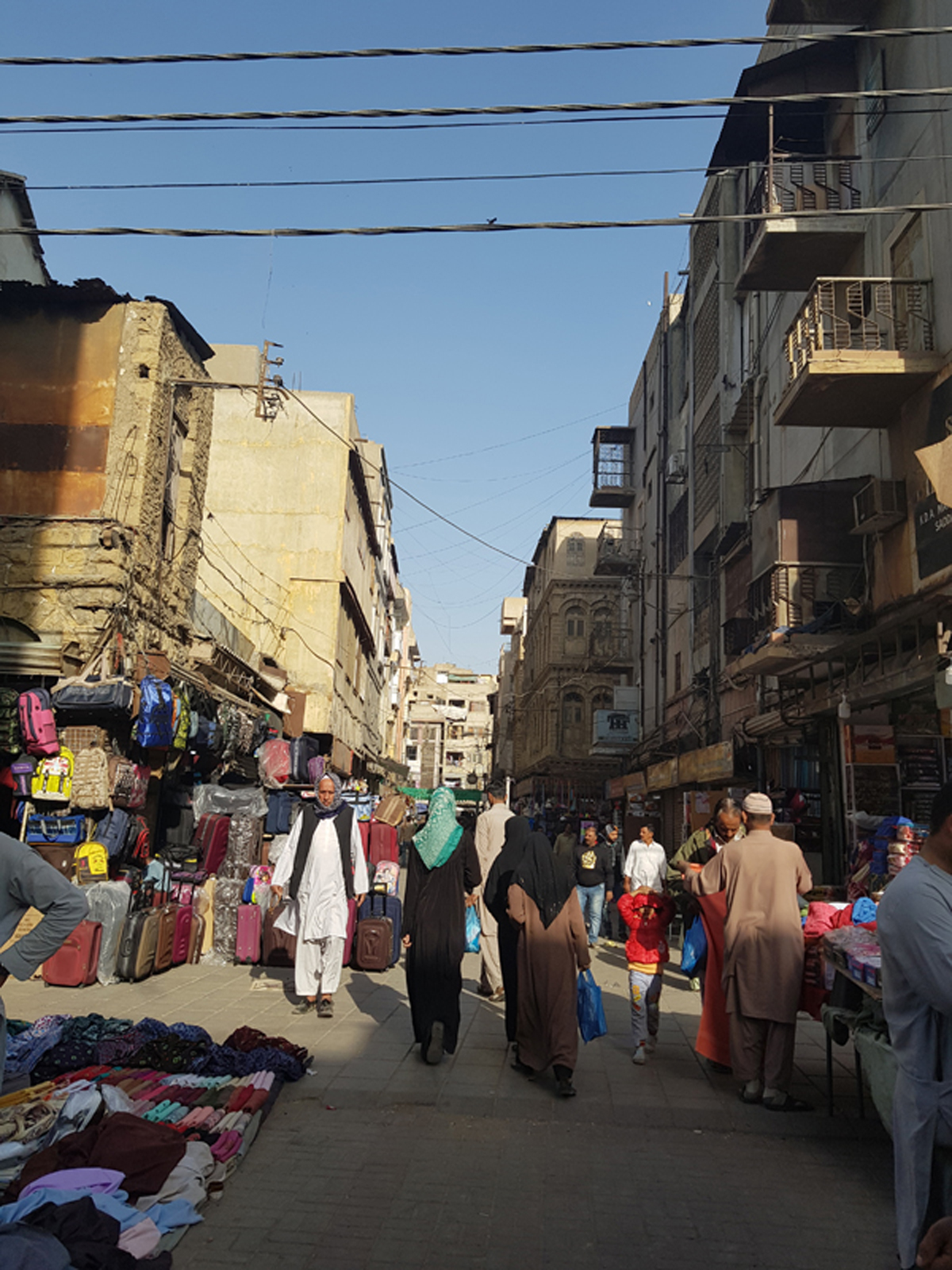
Usually the users of city Bazaar are low-to-high income class as this area located at the junction which linked all over the city i.e old city area and new city area. Earlier, it evolve as a need of officials and residential of area but with a passage of time it becomes denser in terms of shopping area, population and social activity hub. A large bunch of people attracted towards it not because of excess of goods but also because of its economic stability of products. The stakeholders are mostly men of mix community such as Muslim, Hindu, Christian or Parsi while few of the shopkeepers are women who sell spices and nuts.
The pattern of socializing activities are not only included selling and buying but it more focuses on the food eateries and socializing spaces for commuters and visitors. In the culture of Bazaars, informal and formal eateries are placed after intervals, it mostly placed on the ground floor and people enjoyed food during the shopping. The social aspect is also understandable by observing the strong sense of community which can be seen among the merchants and residents in the same building as the shops and residence units are. Sometimes the buildings have shops, residences, godowns and workshops too. Hence the nature of buildings in the area is mixed as it caters multiple functions in same time. The scales of shops are considered as small scale to high scale i.e consists on marts to kiosk or small cabins. Usually they have the sense of marketing only in the periphery of Bazaar as they posted posters and banners to enhance their shop’s speciality etc.
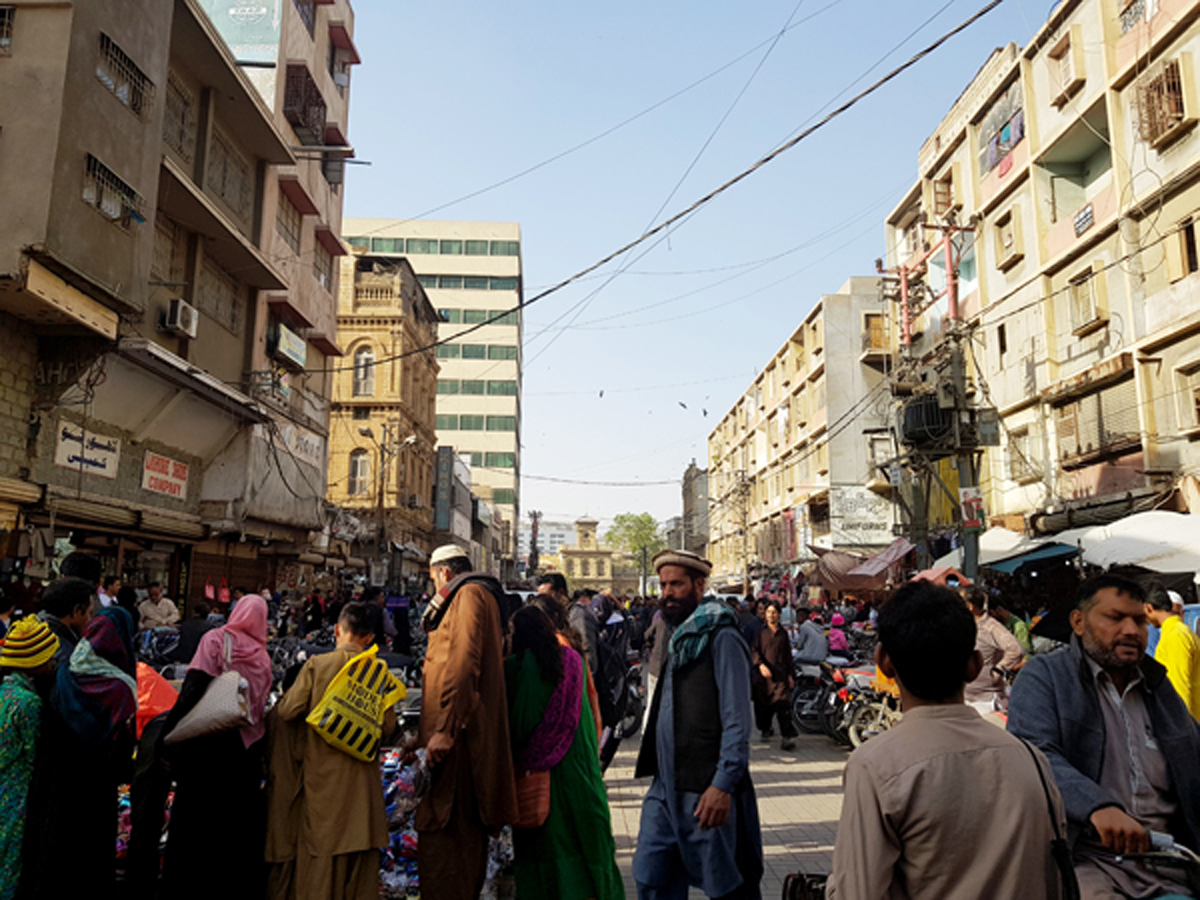
As you enter the bazaar, you experience the senses are assaulted by thousands of smells blood and balm and spices and dung. In the bazaar the eyes of the shoppers are dazzled with a sea of colors. The smells and the sounds complement its visual and hence a pictorial experience rich in supplement is created. Persuasion is not only through the physical sense but equally through the non-physical senses.
Hence, the old bazaar indicates the cultural identity of city. It serves from past 8 decades, and most focusing thing is to gather different communities on a single platform.

Architecturally bazars are designed in the urban fabric of city and contains the same physical elements of neighborhood. The experience follows in the term of axis, focal points, rigidity and in a loop. There is an-open loop circulation system so mostly pedestrian visit other areas in the connection of bazaars. As it was considered a newly-old city level Bazaar so it lies on the principle of Horizontal growth, some streets are adjoining the bazaar which can be seen as a spine of an area. Streets have hierarchy in scale and form the periphery through shops. On other hand, a huge axial pathway connecting to major roads of city (Preedy Street & Shahrah-e-Iraq). The Bazaar also has strong relationship with neighbourhood amenities and institution with no entrance exit controls. People can approach it from where they would like to, and also having no sense of podium to add more experience to the place.
The psychological planning of Bazaars are mostly designed along-side with the residential areas, with main principle of being accessible to everyone and thus are the catchments point of mainly on foot pedestrian traffic, requiring little specialized need for access by vehicles except that for the carriage of goods to and from the bazaar.
Generally façade of bazar are considered as an open design element which is not bounded, but it has a huge pattern of outlook, which is created by every individual shop. But unfortunately in Karachi city it is the most ignoring piece of architecture. The facade of alley of bazaar having an outlook of different eras which can easily be seen through the material and architecture of buildings.
Mostly the layouts of landscape in bazars are unplanned, accidently few trees on the road side along with shrubs are playing a part as landscape element in bazars.
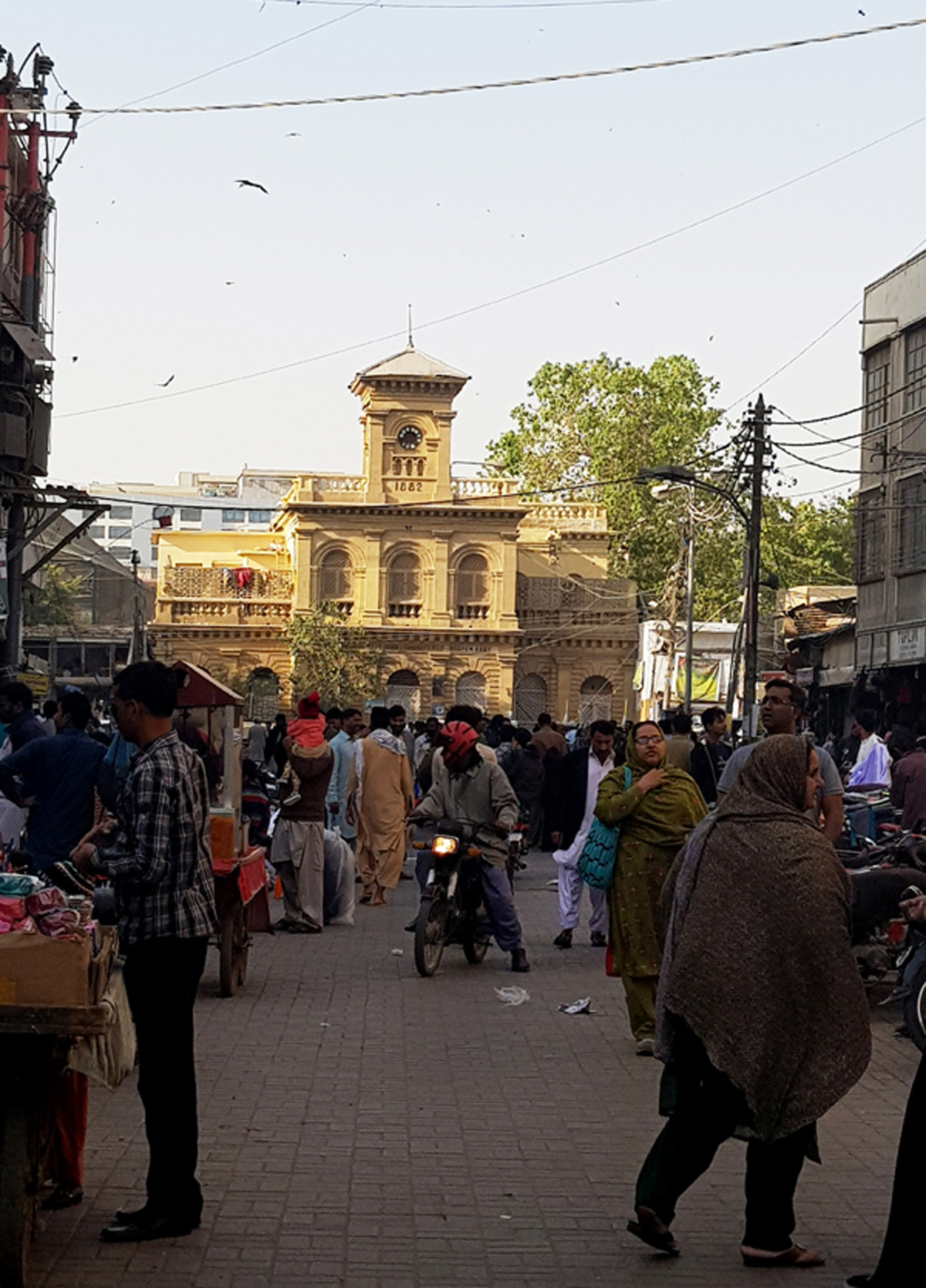
Climatic conditions of area studies throughout the year; the climate of city is hot-humid/arid so mostly the open spaces of bazaars won’t allow people to come in the day time, so people prefer to go to bazaar in evenings. But Bohri Bazaar allows them to do shopping in day time as the shopkeepers used to make space vibrant through using the multiple colour fabric as for shading device.


In daytime, the bazar is efficient in lighting but in night time it consumes a lot of electricity which sometimes compromises the light load of city.
Construction materials mostly used vernacular, such as brick, wood and stone allow the vision to penetrate their surfaces, portraying a sense of honesty. Natural materials allow for their age and history to be read, creating a certain enriching quality and experience. Also, modern contrasting material uses in new buildings other than heritage, which has concrete, glass, wood etc on facades of buildings.
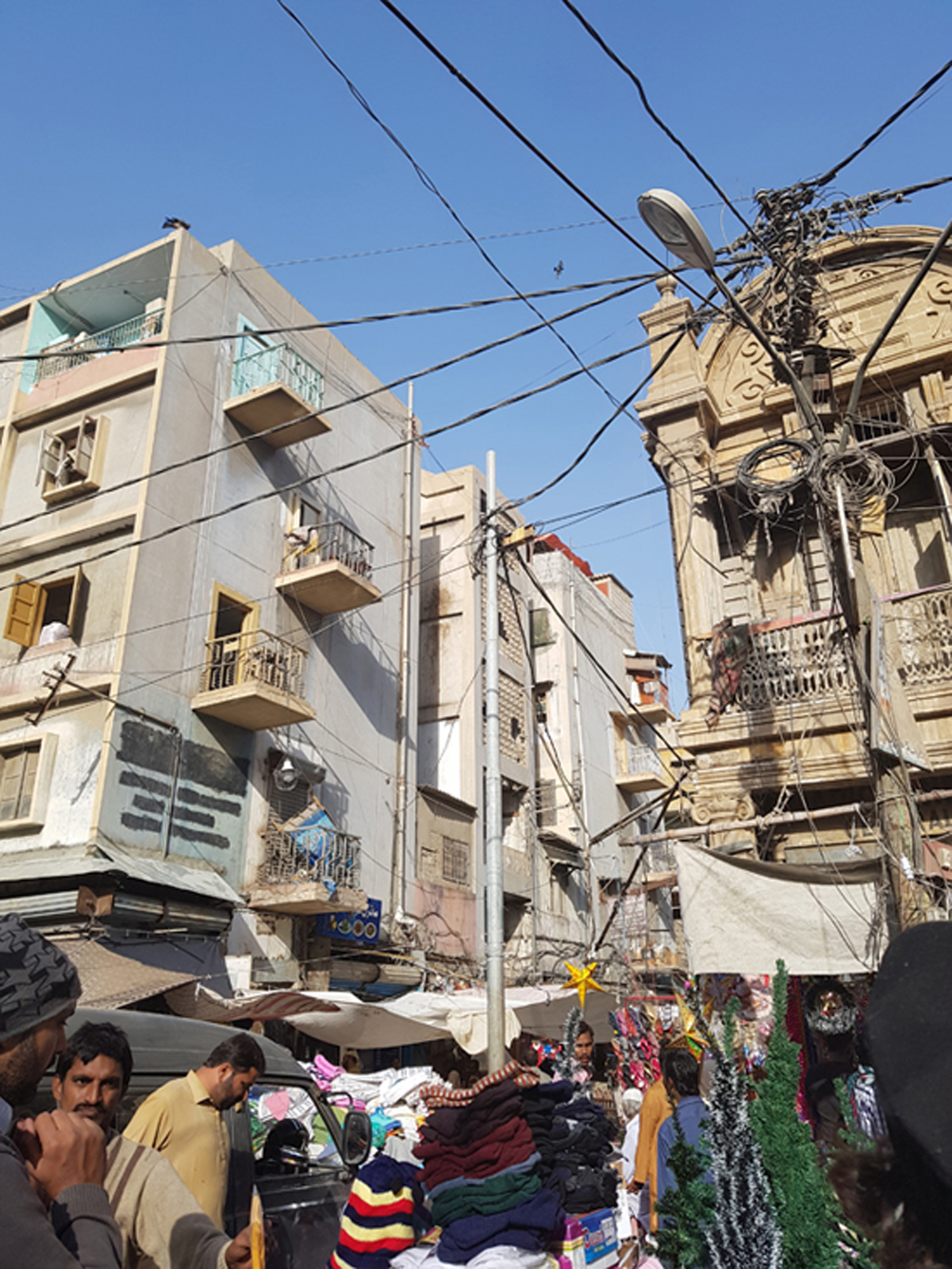
In Pakistan we have number of Bazaars which are designed on the same perimeters, but after the establishment of such spaces only lacking is their management. If the management take their steps towards preserving and looking after the rich essence of cultural spaces so these kind of spaces add rich amount of cultural architecture not only in cities but also in country.
All images © Sanober Khan
